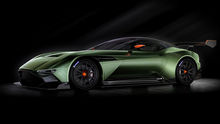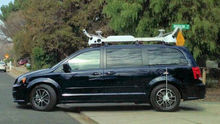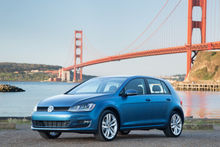Donuts & Horsepower
- Josh Pedersen
- Feb 24, 2015
- 4 min read
If you’re a fan of muscle cars and you live near Huntington Beach, chances are you’ve heard of a weekly car meeting called Donut Derelicts. Every Saturday morning at six o’clock sharp, the parking lot off the corner of Magnolia and Adams fills with classic cars from years that span across the many decades of California’s car culture. This weekly event not only gives enthusiasts a chance to see these monsters up close, but it also allows their owners to reminisce and soak up the nostalgia of days gone by.

For those of you who are too young to remember the golden age of the muscle car, it was an era of large engines and too much – or not enough – horsepower. You could actually drive from one side of the state to the other without seeing a single Toyota Prius or any other hybrid model. Brands like Chrysler, Chevrolet, and Ford were in their prime, tearing up roads everywhere with their 440 big blocks, 302 small blocks, and 428’s. It was a time that gave birth to racing legends like Ronnie Sox, Ed Iskenderian, and Don Garlits. Gasoline and horsepower were the currency of the realm, giving rise to a culture of gear heads and car enthusiasts that still thrive today, and though the mechanical beasts that ushered in this era have now become collector’s items or junkyard heaps, they still have a place in the hearts of those who remember them.

The year was 1986, when four buddies who went to high school together met outside of their local donut shop in their classic cars. They were there for donuts and coffee, but little did they know, they were on the verge of creating something endearing. They carried this on from week to week, and as others began to notice, they, too, brought their cars, causing the small group to grow in number every Saturday. It wasn’t until a local man, who happened to work for Street Rodder magazine, took some photographs and wrote an article titled “Hot Rodder’s Coffee Break” that these gatherings really started to build momentum. The next weekend, seventy-five cars showed up, and just like that, Donut Derelicts was born. Since then, it’s become one of the most famous car gatherings in the state and has been featured in over twenty different automotive publications.

The first question one might ask when witnessing this spectacle is what causes somebody to spend such a great deal of time and money on something they’ll only drive a couple of times a week. Is it nostalgia or something to ease a mid-life crisis? One collector claimed, “It’s reminiscent of cars from when I was in high school and college that I wanted or owned. It was nice because it was possible to build something from salvage parts.” To another collector, Justin Lenehan, it’s the idea of keeping the past alive. “It’s like restoring an old house. Cars back then weren’t computers on wheels, they were so much more.” For father and son enthusiasts, John Warrick and John Warrick senior it’s deeper than that. “There’s a bonding factor between owner and car. You’re putting your blood, sweat, time, and tears into these vehicles.” When asked if it brought him closer to his dad, he said, “It’s common ground for me and my pops.” After talking to a few more people, I learned that that’s not the only common ground they share. All of them have memories of place called Lion’s Drag Strip, a raceway located in the Wilmington District of Los Angeles. It opened in 1955 and closed down in 1972. It was one of the few places they were allowed to race without getting in trouble, but due to noise complaints, it was shut down on its seventeenth year of operation.
One man, from Garden Grove, actually tracked down the very car he owned in the days of Lion’s Drag Strip. His 1970 Dodge Challenger R/T was painted yellow with two stripes on each side of the vehicle. He claimed it was an act of fate that the man he sold it to still owned it and actually had it up for sale. After haggling over the price, he was able to get it back for less than he sold it for. That being said, to claim these cars are a waste of money would be outlandish and ignorant of the vehicle’s history. According to Hagerty, a company that specializes in the values of classic cars, in 1969 a Daytona Charger sold for anywhere from $5,000 to $6,500 dollars. Today it’s worth anywhere from $140,000 to $310,000 dollars. The Ford Mustang Mach One once sold for $4,000 to $5,500 dollars and is now worth anywhere from $35,000 to $65,000 dollars. If you think that’s a lot of money, a 1971 Plymouth Barracuda once sold for $5,000 to $7,000 dollars and is now worth anywhere from $45,000 to $1.7 million dollars. While the prices depend largely on the model and engine options, those are still incredible sums of money. Who would pay that for a car, you might be wondering? Just last year, a Seattle man purchased a convertible Plymouth Barracuda for $3.5 million dollars.
With the government pushing for more eco-friendly vehicles to combat questionable climate change theories, there’s no telling how much longer these mechanical beasts will be allowed on the road. Some predict the day is near when they’ll have to be retired to their garages for good, and others feel with Dodge rereleasing its Charger and Challenger models and Chevrolet pushing the Camaro back on the market, the muscle car is in the midst of a comeback. Wherever you stand on the debate, there’s no denying how impressive these cars truly are. If you’re ever in the neighborhood on a Saturday morning, be sure to stop by Donut Derelicts and see for yourself.


























Comments